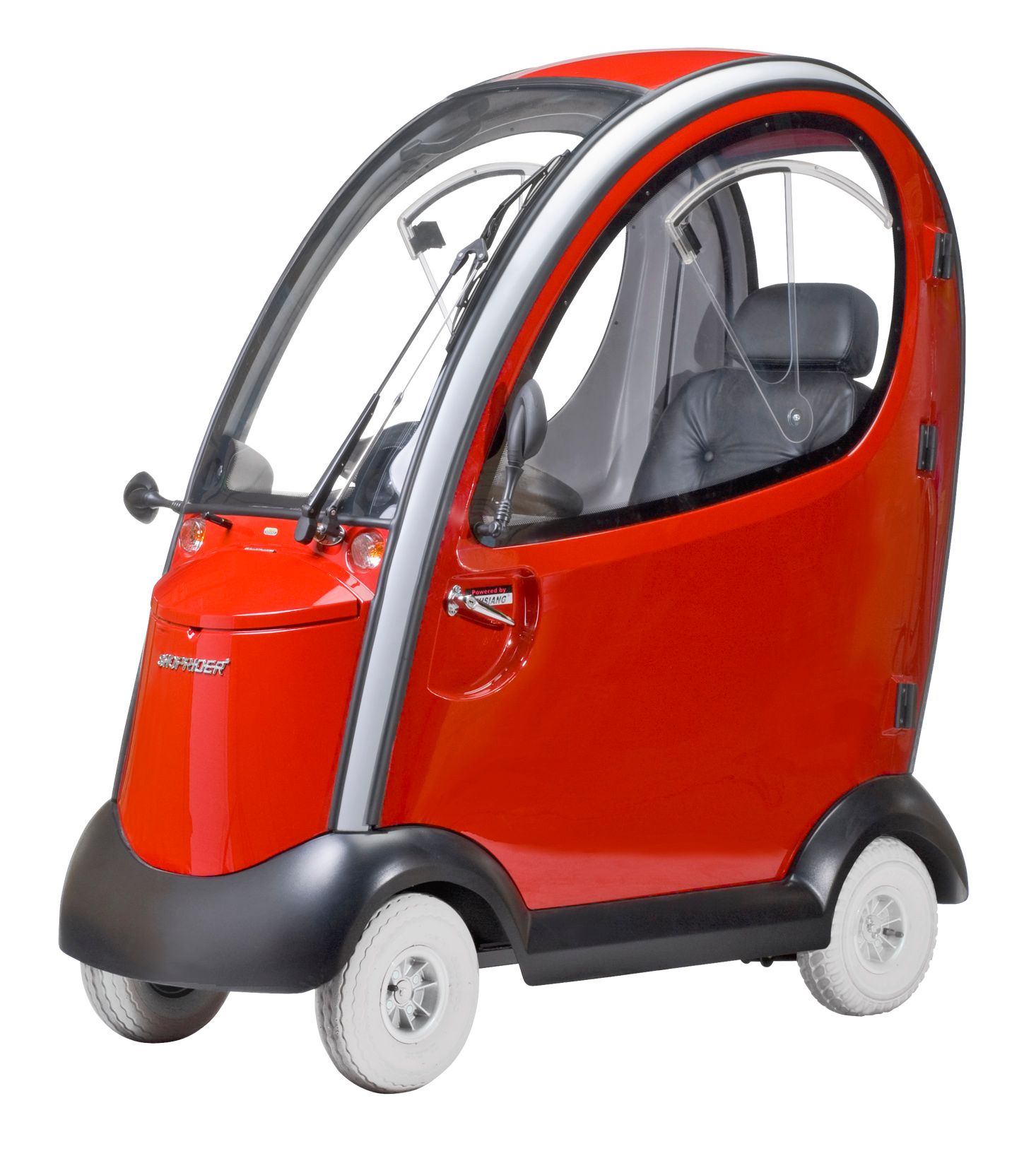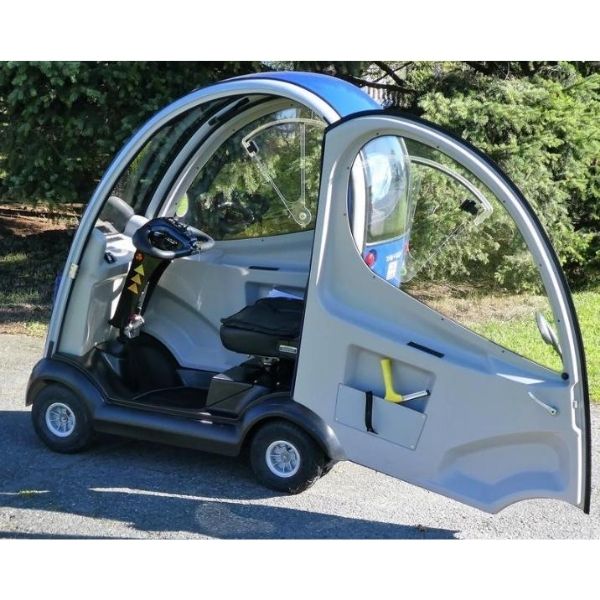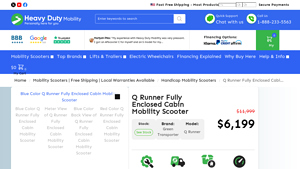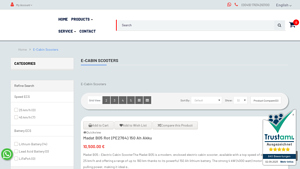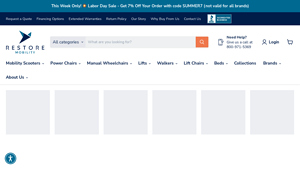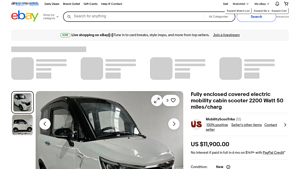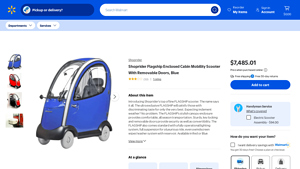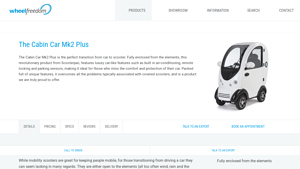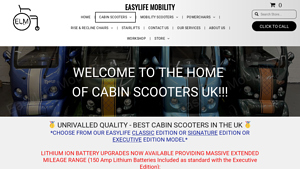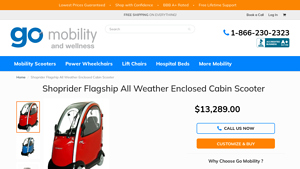Introduction: Navigating the Global Market for cabin scooter
In today’s competitive landscape, sourcing high-quality cabin scooters can pose significant challenges for international B2B buyers, especially in regions such as Africa, South America, the Middle East, and Europe. As the demand for innovative mobility solutions grows, understanding the nuances of cabin scooters—ranging from their design features to performance capabilities—becomes crucial for making informed purchasing decisions. This guide aims to provide a comprehensive overview of the cabin scooter market, including various types, applications, and key considerations for supplier vetting.
Buyers will discover an array of options tailored to diverse needs, whether it’s for personal use, healthcare applications, or commercial purposes. We delve into critical factors such as cost analysis, maintenance requirements, and the latest technological advancements that enhance user experience. Additionally, insights on navigating regulatory standards and ensuring product quality will empower buyers to make well-informed choices.
By equipping B2B buyers with actionable knowledge and strategic insights, this guide serves as a valuable resource for those looking to invest in cabin scooters that not only meet the demands of their markets but also enhance mobility and accessibility for end-users. The focus on detailed analysis and practical advice ensures that stakeholders can confidently approach their sourcing decisions, ultimately driving business success in this burgeoning sector.
Understanding cabin scooter Types and Variations
| Type Name | Key Distinguishing Features | Primary B2B Applications | Brief Pros & Cons for Buyers |
|---|---|---|---|
| Luxury Cabin Scooter | High-end finishes, customizable options, advanced tech | Assisted living facilities, luxury rentals | Pros: Premium comfort, brand appeal. Cons: Higher upfront costs. |
| Heavy-Duty Cabin Scooter | Enhanced load capacity, robust design, powerful motors | Warehousing, industrial sites, outdoor events | Pros: High durability, strong performance. Cons: Bulkier, less maneuverable. |
| Compact Cabin Scooter | Smaller footprint, lightweight design, basic features | Urban mobility, short-distance travel | Pros: Easy to transport, space-efficient. Cons: Limited range and features. |
| All-Terrain Cabin Scooter | Off-road capabilities, rugged tires, suspension systems | Outdoor adventures, tourism services | Pros: Versatile for varied terrains. Cons: May require more maintenance. |
| Standard Cabin Scooter | Basic enclosed design, essential safety features | Community mobility, healthcare transport | Pros: Cost-effective, reliable. Cons: Fewer luxury features and options. |
What Are the Characteristics of Luxury Cabin Scooters?
Luxury cabin scooters are designed for those who prioritize comfort and style. They often feature high-end finishes, customizable options, and advanced technology, such as Bluetooth connectivity and navigation systems. These scooters are suitable for businesses in the assisted living sector or luxury rental services, where an elegant image is crucial. B2B buyers should consider the brand reputation and service support, as well as the potential for higher resale value due to the premium nature of these products.
How Do Heavy-Duty Cabin Scooters Stand Out?
Heavy-duty cabin scooters are built to withstand rigorous use and can carry heavier loads, making them ideal for applications in warehousing, industrial sites, and outdoor events. These scooters typically feature powerful motors and reinforced structures, ensuring they can handle challenging environments. When purchasing, B2B buyers should assess the load capacity and durability against the specific demands of their operational environment, as well as the availability of parts and service.
What Makes Compact Cabin Scooters Ideal for Urban Mobility?
Compact cabin scooters are characterized by their lightweight design and smaller footprint, making them perfect for urban environments where space is at a premium. They are easy to transport and navigate through crowded areas, which is essential for short-distance travel needs. B2B buyers should consider the range and battery life, as well as the scooter’s ability to meet local regulations for urban mobility solutions.
Why Choose All-Terrain Cabin Scooters for Outdoor Adventures?
All-terrain cabin scooters are designed to handle rugged environments with features such as off-road tires and advanced suspension systems. They are particularly suitable for tourism services and outdoor adventure companies that require reliable transport across various terrains. Buyers in this segment should evaluate the scooter’s performance on different surfaces and its maintenance needs, ensuring that it aligns with the operational demands of outdoor activities.
What Are the Benefits of Standard Cabin Scooters?
Standard cabin scooters offer a balance of functionality and affordability, featuring essential safety measures and a basic enclosed design. They are commonly used in community mobility and healthcare transport, providing reliable solutions without the added costs of luxury features. B2B buyers should focus on the scooter’s reliability and service options, as well as its compatibility with existing transportation systems in their operations.
Key Industrial Applications of cabin scooter
| Industry/Sector | Specific Application of cabin scooter | Value/Benefit for the Business | Key Sourcing Considerations for this Application |
|---|---|---|---|
| Healthcare | Patient transportation within medical facilities | Enhances mobility for patients, improving access to services | Ensure compliance with health regulations and safety standards. |
| Tourism and Leisure | Guided tours and sightseeing in urban areas | Provides a unique experience for tourists, increasing engagement | Look for models with comfort features and customizable options. |
| Warehousing and Logistics | Internal transport for staff and goods | Streamlines operations and reduces manual labor costs | Consider battery life, load capacity, and ease of maneuverability. |
| Urban Mobility Solutions | Last-mile connectivity in city environments | Reduces traffic congestion and promotes sustainable transport | Evaluate local regulations and infrastructure compatibility. |
| Retail and Shopping Malls | Customer assistance and transport within premises | Improves customer experience and accessibility for all shoppers | Focus on design aesthetics and user-friendly features. |
How Are Cabin Scooters Utilized in Healthcare Settings?
In healthcare facilities, cabin scooters serve as efficient patient transport solutions, enabling easier movement between departments. They address challenges faced by patients with mobility issues, ensuring they can access necessary medical services without discomfort. Buyers in this sector should prioritize sourcing scooters that meet health and safety regulations, including features like adjustable seating and secure restraints to enhance patient safety.
What Role Do Cabin Scooters Play in Tourism and Leisure?
Cabin scooters are increasingly employed in the tourism sector for guided tours and sightseeing, particularly in urban settings. They offer tourists a unique and enjoyable way to explore attractions while providing comfort and protection from the elements. B2B buyers should focus on scooters equipped with advanced features like multimedia systems and spacious seating to enhance the overall visitor experience, ensuring they meet the diverse needs of different tourist demographics.
How Can Cabin Scooters Optimize Operations in Warehousing and Logistics?
In warehousing and logistics, cabin scooters facilitate the internal transport of staff and goods, significantly enhancing operational efficiency. They help reduce the physical strain on employees while expediting the movement of materials within large facilities. Buyers in this sector must consider factors such as battery life, load capacity, and maneuverability to ensure the chosen model meets their specific operational demands.
Why Are Cabin Scooters Important for Urban Mobility Solutions?
Cabin scooters are becoming vital for last-mile connectivity in urban environments, effectively addressing the challenge of traffic congestion. They offer a sustainable transport alternative, encouraging eco-friendly commuting options. International buyers should assess local regulations regarding electric vehicles and infrastructure compatibility to ensure seamless integration into existing urban transport systems.
How Do Cabin Scooters Enhance Retail Experiences?
In retail environments, cabin scooters assist customers with mobility challenges, allowing them to navigate shopping malls and large stores with ease. This not only improves the shopping experience but also increases foot traffic and sales opportunities for businesses. Retailers should focus on the aesthetic appeal and user-friendly features of cabin scooters to align with brand identity and customer expectations.
3 Common User Pain Points for ‘cabin scooter’ & Their Solutions
Scenario 1: Difficulty in Sourcing Reliable Cabin Scooters
The Problem: International B2B buyers often encounter significant challenges when trying to source high-quality cabin scooters. Given the diverse needs across different regions, such as those in Africa, South America, and the Middle East, buyers may struggle with finding manufacturers that meet specific quality standards and compliance regulations. This can lead to frustration, as subpar scooters can result in safety concerns for end-users and a negative impact on the buyer’s reputation.
The Solution: To effectively source reliable cabin scooters, buyers should prioritize establishing partnerships with reputable manufacturers that have a proven track record. Conduct thorough research into potential suppliers by checking their certifications, customer reviews, and warranty offerings. Additionally, consider attending industry trade shows or mobility expos to interact directly with manufacturers. These events provide opportunities to evaluate the product quality firsthand and discuss specific needs with suppliers. When negotiating, ensure that you discuss after-sales support, availability of spare parts, and customization options to align with regional requirements.
Scenario 2: Understanding Technical Specifications and Compliance
The Problem: B2B buyers often face confusion regarding the technical specifications and compliance standards required for cabin scooters in their target markets. For instance, different regions may have varying regulations concerning speed limits, battery specifications, and safety features, making it difficult for buyers to select models that are both compliant and suitable for their customer base.
The Solution: To navigate these complexities, buyers should invest time in understanding the local regulations governing mobility scooters in their respective markets. This may involve consulting with local authorities or industry experts to gather relevant guidelines. Furthermore, when evaluating cabin scooters, create a checklist of essential specifications based on these regulations. Engage with manufacturers who can provide detailed technical documentation and compliance certifications for their products. It’s also beneficial to form a network with other B2B buyers in the industry who can share insights and experiences regarding compliance and best practices for selecting cabin scooters.
Scenario 3: Balancing Cost and Quality in Cabin Scooter Purchases
The Problem: Many B2B buyers face the challenge of balancing cost and quality when purchasing cabin scooters. While it may be tempting to opt for the lowest-priced options to maximize profit margins, this can lead to long-term issues with customer satisfaction and product reliability. Buyers must navigate the risk of investing in cheaper alternatives that may compromise on essential features, leading to increased returns and warranty claims.
The Solution: To strike the right balance between cost and quality, buyers should adopt a strategic procurement approach. Begin by defining the key features and specifications that are non-negotiable for your target market. Then, conduct a cost-benefit analysis to evaluate potential suppliers based on these criteria rather than solely on price. Consider investing in higher-quality options that offer extended warranties and superior support, as this can mitigate future costs associated with repairs and replacements. Establish relationships with suppliers that allow for bulk purchasing discounts without sacrificing quality. Additionally, consider customer feedback and performance data from existing products to inform your purchasing decisions, ensuring that you are investing in scooters that will meet customer expectations and drive repeat business.
Strategic Material Selection Guide for cabin scooter
What Are the Key Materials Used in Cabin Scooters and Their Properties?
When selecting materials for cabin scooters, it is essential to consider their properties and how they affect performance, durability, and overall user experience. Below is an analysis of four common materials used in the construction of cabin scooters, focusing on their key properties, advantages and disadvantages, and specific considerations for international B2B buyers.
How Does Aluminum Benefit Cabin Scooter Manufacturing?
Aluminum is widely used in cabin scooter manufacturing due to its lightweight nature and excellent corrosion resistance. With a temperature rating that can withstand significant variations, aluminum is suitable for various climates, making it ideal for regions in Africa, South America, and Europe.
Pros: Aluminum is durable and easy to work with, allowing for complex shapes and designs. Its lightweight nature enhances the scooter’s mobility and efficiency, which is crucial for users who require mobility aids.
Cons: While aluminum is generally cost-effective, high-grade aluminum can be expensive. Additionally, it may require additional treatments to enhance its strength and durability, which can complicate manufacturing processes.
Impact on Application: Aluminum is compatible with various media, including water and salt, making it ideal for coastal regions. However, it may not perform well in high-stress applications without proper reinforcement.
Considerations for International Buyers: Compliance with international standards such as ASTM and DIN is crucial. Buyers should also consider the availability of aluminum in their regions and the associated costs of transportation.
What Role Does Steel Play in Cabin Scooter Durability?
Steel, particularly stainless steel, is another common material used in cabin scooters. Known for its strength and durability, steel can withstand high pressure and is resistant to corrosion when treated properly.
Pros: Steel provides exceptional structural integrity, making it suitable for high-load applications. It is also more cost-effective compared to aluminum, especially for large-scale production.
Cons: The weight of steel can negatively impact the scooter’s efficiency and ease of use. Moreover, if not treated, steel can corrode, especially in humid environments.
Impact on Application: Steel’s high durability makes it suitable for components that experience significant wear and tear. However, its weight can limit the scooter’s speed and battery efficiency.
Considerations for International Buyers: Buyers should ensure that the steel used meets local standards for corrosion resistance, particularly in humid climates. Understanding the local availability of steel can also impact cost-effectiveness.
How Do Composites Enhance Cabin Scooter Performance?
Composite materials, such as fiberglass and carbon fiber, are increasingly being used in cabin scooters for their lightweight and high-strength properties. These materials can be engineered to meet specific performance criteria.
Pros: Composites are highly resistant to corrosion and can be molded into complex shapes, allowing for innovative designs. They also provide excellent thermal insulation, which is beneficial for comfort.
Cons: The manufacturing process for composites can be more complex and costly than metals. Additionally, the repair of composite materials can be challenging.
Impact on Application: Composites are particularly suitable for components exposed to harsh weather conditions, as they do not rust or corrode. However, they may not be suitable for high-load structural applications without reinforcement.
Considerations for International Buyers: Buyers should be aware of the manufacturing capabilities in their regions, as not all suppliers may have the expertise to work with advanced composites. Understanding local regulations regarding composite materials is also essential.
What Is the Importance of Plastics in Cabin Scooter Design?
Plastics, including ABS and polycarbonate, are commonly used for body panels and interior components of cabin scooters. They are lightweight and can be produced in various colors and finishes.
Pros: Plastics are cost-effective and can be easily molded into intricate designs. They offer good impact resistance and can be treated for UV stability, making them suitable for outdoor use.
Cons: Plastics may not provide the same level of structural integrity as metals and can degrade over time when exposed to harsh environmental conditions.
Impact on Application: While plastics are suitable for aesthetic components, they may not be ideal for load-bearing applications. Their compatibility with various media makes them versatile but requires careful selection based on environmental exposure.
Considerations for International Buyers: Buyers should ensure that the plastics used comply with local safety and environmental regulations, particularly in regions with stringent standards.
Summary Table of Material Selection for Cabin Scooters
| Material | Typical Use Case for cabin scooter | Key Advantage | Key Disadvantage/Limitation | Relative Cost (Low/Med/High) |
|---|---|---|---|---|
| Aluminum | Frame and structural components | Lightweight and corrosion-resistant | Higher cost for high-grade options | Medium |
| Steel | Load-bearing structures | High strength and durability | Heavier, potential for corrosion without treatment | Low |
| Composites | Body panels and non-structural components | Lightweight and customizable | Complex manufacturing and repair challenges | High |
| Plastics | Interior components and body panels | Cost-effective and versatile | Lower structural integrity, potential degradation | Low |
This strategic material selection guide provides valuable insights for B2B buyers in different regions, enabling them to make informed decisions based on performance, cost, and compliance considerations.
In-depth Look: Manufacturing Processes and Quality Assurance for cabin scooter
What Are the Key Stages in the Manufacturing Process of Cabin Scooters?
Manufacturing a cabin scooter involves several critical stages, each designed to ensure that the final product is safe, reliable, and meets consumer expectations. The process typically includes material preparation, forming, assembly, and finishing.
-
Material Preparation: This initial stage involves selecting high-quality materials suited for mobility scooters. Common materials include high-strength steel for the frame, durable plastics for the body, and advanced composites for certain parts. Suppliers often conduct stringent inspections of incoming materials to ensure they meet industry standards.
-
Forming: After materials are prepared, they are cut, shaped, and molded into the required components. Techniques such as stamping, bending, and injection molding are commonly used to create parts like the chassis, body panels, and seat frames. This stage requires precision engineering to ensure that parts fit together seamlessly.
-
Assembly: During this stage, the various components are brought together. Skilled technicians assemble the scooter, integrating electrical systems, motors, and safety features. This is where quality checks are crucial, as any misalignment or error can lead to safety issues. Automation may play a role here, with robotic systems assisting in repetitive tasks to enhance efficiency and consistency.
-
Finishing: The final stage of manufacturing involves painting, coating, and applying decals or branding. This not only enhances the aesthetic appeal but also provides protection against weather elements. Quality control at this stage ensures that the finish is durable and meets the desired specifications.
How Do Quality Assurance Practices Ensure Cabin Scooter Reliability?
Quality assurance (QA) is integral to the manufacturing process, ensuring that each scooter meets international safety and performance standards. The QA process typically encompasses several international and industry-specific standards.
-
International Standards: Many manufacturers adhere to ISO 9001, which focuses on quality management systems. This certification indicates that a company consistently meets customer and regulatory requirements. For cabin scooters, compliance with CE (Conformité Européenne) marking is essential for selling in European markets, ensuring that products meet health, safety, and environmental protection standards.
-
Industry-Specific Standards: Additional certifications may include API (American Petroleum Institute) standards, particularly for components that involve lubrication and motor systems. Compliance with these standards is crucial for ensuring the longevity and reliability of the scooters.
What Are the Key Quality Control Checkpoints in Cabin Scooter Production?
Quality control (QC) checkpoints are strategically placed throughout the manufacturing process to catch defects early and ensure compliance with standards.
-
Incoming Quality Control (IQC): This checkpoint occurs when raw materials arrive at the manufacturing facility. Inspectors verify that materials meet specified standards and are free from defects. This step is vital for preventing issues later in the production process.
-
In-Process Quality Control (IPQC): As assembly progresses, periodic checks ensure that components are assembled correctly and function as intended. Technicians may conduct tests on electrical systems, brakes, and other critical features to guarantee performance.
-
Final Quality Control (FQC): The last checkpoint occurs after assembly but before the product is shipped. This comprehensive inspection includes functionality tests, safety checks, and visual inspections to ensure that the cabin scooter meets all specifications.
What Testing Methods Are Commonly Used in Cabin Scooter Manufacturing?
Various testing methods are employed to ensure that cabin scooters are safe and functional. These methods include:
-
Functional Testing: This involves assessing the scooter’s performance under various conditions, including speed, range, and handling. Test riders may evaluate the scooter’s responsiveness and comfort.
-
Safety Testing: Safety features such as brakes, lights, and emergency systems undergo rigorous testing to ensure they function correctly under all circumstances.
-
Environmental Testing: Scooters are tested under different environmental conditions to gauge their durability and performance in adverse weather, including rain and extreme temperatures.
How Can B2B Buyers Verify Supplier Quality Control Practices?
For B2B buyers, especially those from diverse regions such as Africa, South America, the Middle East, and Europe, verifying a supplier’s quality control practices is crucial for ensuring product reliability.
-
Supplier Audits: Conducting on-site audits allows buyers to assess the manufacturing environment, observe QC practices, and evaluate the overall capabilities of the supplier. It’s advisable to create a checklist based on international standards and industry best practices to guide the audit process.
-
Quality Reports: Requesting detailed quality reports can provide insights into the supplier’s QC processes, including defect rates, compliance with standards, and the results of past inspections. These reports can indicate the supplier’s commitment to quality.
-
Third-Party Inspections: Engaging third-party inspection services can offer an unbiased evaluation of the manufacturer’s QC practices. These services can perform audits, product inspections, and even testing to ensure that the products meet required standards.
What Are the Quality Control Nuances for International Buyers?
International B2B buyers must navigate specific challenges when sourcing cabin scooters. Understanding regional regulations and certifications is essential, as these can vary significantly.
-
Certification Requirements: Different countries have unique certification requirements. For example, while CE marking is essential for Europe, other regions may have their own specific regulations that must be adhered to.
-
Shipping and Handling Standards: Buyers should also be aware of shipping and handling standards that may affect product quality during transit. Ensuring that suppliers use appropriate packaging and handling procedures can mitigate damage risks.
-
Cultural and Communication Barriers: Establishing clear communication channels and understanding cultural differences can significantly enhance the buyer-supplier relationship, fostering transparency and trust.
By focusing on these aspects of manufacturing processes and quality assurance, B2B buyers can make informed decisions when sourcing cabin scooters, ensuring they partner with reliable suppliers who deliver high-quality products.
Practical Sourcing Guide: A Step-by-Step Checklist for ‘cabin scooter’
Introduction
This practical sourcing guide serves as a comprehensive checklist for B2B buyers looking to procure cabin scooters. With the growing demand for mobility solutions across various markets, it is essential to approach sourcing strategically to ensure quality, reliability, and value for money. This guide outlines key steps to help you navigate the procurement process effectively.
Step 1: Define Your Technical Specifications
Before beginning your search, clearly outline the technical specifications that meet your operational needs. Consider factors such as maximum speed, battery range, weight capacity, and any additional features such as heating systems or multimedia options. Defining these parameters upfront will help streamline your sourcing process and ensure that the products you consider are suitable for your target market.
Step 2: Research Potential Suppliers
Conduct thorough research to identify potential suppliers specializing in cabin scooters. Look for companies with a proven track record in manufacturing and distributing mobility solutions. Pay attention to their market presence, customer reviews, and any industry certifications that indicate quality standards. This foundational research sets the stage for effective supplier evaluation.
Step 3: Evaluate Supplier Certifications
Before engaging with suppliers, verify their certifications and compliance with industry standards. Ensure they adhere to safety and quality regulations specific to your region, such as ISO certifications or CE marking in Europe. This step is crucial for ensuring that the products you source are safe for end-users and meet legal requirements.
Step 4: Request Product Samples
Once you have narrowed down your list of potential suppliers, request product samples for evaluation. Testing the cabin scooters firsthand allows you to assess their build quality, comfort, and usability. Pay close attention to features such as maneuverability, comfort of the seating, and ease of operation, as these will directly impact customer satisfaction.
Step 5: Compare Pricing and Payment Terms
Collect and compare pricing from different suppliers to understand the market rates for cabin scooters. While cost is a significant factor, consider the overall value, including warranty, service agreements, and any additional features. Additionally, clarify payment terms to ensure they align with your cash flow requirements, as flexible payment options can facilitate smoother transactions.
Step 6: Assess After-Sales Support and Warranty
Inquire about the after-sales support offered by potential suppliers. This includes service agreements, maintenance options, and availability of spare parts. A strong after-sales support system is vital for ensuring the longevity and reliability of the cabin scooters. Additionally, review warranty terms to understand coverage for defects or issues that may arise post-purchase.
Step 7: Finalize Contracts and Place Orders
Once you have selected a supplier, it is time to finalize contracts. Ensure that all terms, including pricing, delivery schedules, and service agreements, are clearly outlined in the contract. Carefully review all details before placing your order to prevent any misunderstandings. Establishing a clear agreement protects both parties and sets the groundwork for a successful partnership.
By following this checklist, B2B buyers can make informed decisions when sourcing cabin scooters, ensuring they meet the needs of their customers while maintaining high standards of quality and service.
Comprehensive Cost and Pricing Analysis for cabin scooter Sourcing
What Are the Key Cost Components in Cabin Scooter Manufacturing?
When sourcing cabin scooters, understanding the cost structure is critical for international B2B buyers. The primary cost components include:
-
Materials: The choice of materials significantly impacts the price. High-quality components such as robust frames, advanced battery systems, and premium upholstery can increase costs but enhance durability and performance. For instance, lithium-ion batteries, while more expensive, provide longer ranges and better efficiency.
-
Labor: Labor costs vary by region and can influence overall pricing. Skilled labor is essential for assembling complex electronic systems and ensuring quality craftsmanship, which is particularly important for high-end models like the Cabin Car and Q Runner.
-
Manufacturing Overhead: This includes utilities, rent, and equipment depreciation. Efficient manufacturing processes can help minimize these costs, allowing suppliers to offer more competitive pricing.
-
Tooling: Initial tooling costs for custom designs or modifications can be substantial. Buyers should consider whether the supplier has the capability to accommodate specific design needs without excessive tooling charges.
-
Quality Control (QC): Rigorous QC processes ensure that every scooter meets safety and performance standards, which adds to the cost but provides peace of mind for buyers.
-
Logistics: Transportation costs can vary based on the shipping method, distance, and import/export duties. Understanding these costs is crucial for calculating the total landed cost.
-
Margin: Suppliers typically mark up prices to cover their costs and generate profit. Buyers should be aware that margins can vary significantly based on supplier reputation, product exclusivity, and market demand.
How Do Price Influencers Affect Cabin Scooter Costs?
Several factors influence the final pricing of cabin scooters:
-
Volume/MOQ (Minimum Order Quantity): Higher order volumes often lead to lower per-unit costs. Buyers should assess their needs carefully to negotiate better deals with suppliers.
-
Specifications and Customization: Custom features such as enhanced safety systems, luxury seating, or advanced infotainment options can drive up prices. Clear communication of specifications can help manage costs effectively.
-
Materials and Quality Certifications: The use of certified materials and adherence to safety standards can increase costs but are essential for compliance and customer trust, especially in markets with strict regulations.
-
Supplier Factors: The reputation and reliability of the supplier can significantly affect pricing. Established suppliers with a track record of quality may charge higher prices, but the assurance of quality and service can justify the cost.
-
Incoterms: Understanding the terms of shipping and delivery (such as FOB, CIF, etc.) is crucial for calculating total costs. These terms dictate who bears the shipping costs and risks during transport.
What Are Effective Buyer Tips for Sourcing Cabin Scooters?
For international buyers, especially those in Africa, South America, the Middle East, and Europe, here are some actionable tips:
-
Negotiate Wisely: Leverage your purchasing power by negotiating terms, especially if you are considering bulk orders. Request quotes from multiple suppliers to compare offers.
-
Focus on Cost Efficiency: Look beyond the sticker price. Consider the Total Cost of Ownership (TCO), which includes maintenance, operational costs, and potential resale value. Investing in higher-quality scooters may lead to lower long-term costs.
-
Understand Pricing Nuances: Be aware of regional pricing differences, import tariffs, and currency fluctuations that may affect the final cost. Developing relationships with local suppliers may mitigate some of these issues.
-
Request Samples: Before committing to large orders, request samples to evaluate quality and performance. This can help avoid costly mistakes down the line.
-
Stay Informed: Keep abreast of market trends and technological advancements in the mobility sector. This knowledge can enhance your negotiation position and help you make informed purchasing decisions.
Disclaimer on Indicative Prices
Prices for cabin scooters can fluctuate based on various factors such as market demand, material costs, and exchange rates. It is advisable for buyers to request updated quotes from suppliers to obtain the most accurate pricing information tailored to their specific needs.
Alternatives Analysis: Comparing cabin scooter With Other Solutions
Exploring Alternatives to Cabin Scooters for Mobility Solutions
When considering mobility solutions, it’s essential to evaluate various options to determine which best meets specific needs. Cabin scooters offer unique features, but other alternatives may provide better performance, cost-effectiveness, or convenience depending on the user’s requirements. This analysis compares cabin scooters with two viable alternatives: traditional mobility scooters and electric wheelchairs.
Comparison Table
| Comparison Aspect | Cabin Scooter | Traditional Mobility Scooter | Electric Wheelchair |
|---|---|---|---|
| Performance | High speed (up to 18 mph) with enclosed design for comfort and protection. | Moderate speed (up to 8 mph), open design; less weather protection. | Variable speed, usually lower than scooters; highly maneuverable. |
| Cost | Higher initial investment ($6,199 – $11,999) but offers luxury features. | More affordable options ($1,000 – $3,500), fewer luxury features. | Price range varies ($1,200 – $7,000), depending on features and customization. |
| Ease of Implementation | Requires dealer setup and customization; may have longer lead times. | Generally easy to purchase and use; minimal setup required. | Can be customized but may require professional setup for advanced features. |
| Maintenance | Moderate; specialized service may be required for luxury features. | Lower; standard maintenance like battery checks. | Varies widely; some require specialized service for repairs. |
| Best Use Case | Ideal for users seeking comfort, style, and protection from the elements. | Suitable for short-distance travel and everyday errands. | Best for users needing high maneuverability in tight spaces or indoors. |
Detailed Breakdown of Alternatives
Traditional Mobility Scooters
Traditional mobility scooters are popular for their affordability and ease of use. They typically have a simpler design and are lighter, making them easier to transport. However, they lack the enclosed features of cabin scooters, exposing users to the elements. While they may not reach the higher speeds of cabin scooters, they are reliable for short-distance travel and daily errands. Their lower cost makes them accessible to a broader audience, but they may not provide the same level of comfort or luxury.
Electric Wheelchairs
Electric wheelchairs offer significant advantages in maneuverability and ease of navigation in tight spaces. They are highly customizable, making them suitable for various needs, including indoor use. However, their speed is generally lower compared to cabin scooters, which may limit outdoor use on larger terrains. The price can vary widely based on the features and customization options, making it essential for buyers to assess their specific needs and budget. While they provide excellent mobility for those with severe mobility challenges, they may not offer the same comfort level as cabin scooters for longer journeys.
Conclusion: How to Choose the Right Mobility Solution
Choosing the right mobility solution involves understanding the specific needs of the user, including performance, comfort, and budget. For buyers in diverse markets such as Africa, South America, the Middle East, and Europe, assessing the local infrastructure and environmental conditions is crucial. Cabin scooters may be ideal for those seeking luxury and protection, while traditional mobility scooters and electric wheelchairs offer affordability and versatility. By analyzing these alternatives, B2B buyers can make informed decisions tailored to their clientele’s requirements, ensuring that the selected mobility solution enhances independence and quality of life.
Essential Technical Properties and Trade Terminology for cabin scooter
What Are the Key Technical Properties of a Cabin Scooter?
Understanding the essential technical properties of cabin scooters is crucial for B2B buyers looking to make informed purchasing decisions. Here are some key specifications that should be considered:
-
Battery Capacity and Type
Battery capacity, typically measured in amp-hours (Ah), directly impacts the range and performance of the scooter. Options may include lead-acid or lithium-ion batteries, with lithium-ion providing longer life and lighter weight. For B2B buyers, selecting the appropriate battery type is vital for ensuring operational efficiency and longevity, particularly in regions where long-distance travel is essential. -
Motor Power
The motor’s power, usually expressed in watts (W), indicates the scooter’s ability to navigate various terrains and inclines. A powerful motor, such as a 1200W brushless motor, allows for faster speeds and better handling in challenging environments. This specification is particularly important for buyers in hilly or rugged areas, as it directly affects user satisfaction and safety. -
Weight Capacity
The maximum load capacity of a cabin scooter, often ranging from 300 to 600 lbs, dictates the number of users and cargo it can accommodate. For B2B buyers, understanding weight limits is crucial for meeting the needs of diverse customers, ensuring compliance with safety standards, and preventing potential damages from overloading. -
Dimensions and Turning Radius
The physical dimensions and turning radius of the scooter affect maneuverability, particularly in urban environments with tight spaces. A compact design with a smaller turning radius enhances accessibility, making it suitable for various applications. Buyers should consider these factors to ensure the scooters fit into their intended environments, whether for personal use or commercial applications. -
Suspension System
The type of suspension system (e.g., integral damping) plays a significant role in ride quality and comfort. A well-designed suspension system minimizes shocks and vibrations, enhancing user experience. For B2B buyers, this specification is essential in markets that prioritize comfort and usability, particularly for elderly or disabled users. -
Safety Features
Advanced safety features, such as electronic braking systems, rearview cameras, and parking sensors, significantly enhance user confidence. These features are especially important in regions with high traffic or challenging road conditions. Buyers should prioritize scooters that offer robust safety measures to reduce liability and enhance customer satisfaction.
What Are Common Trade Terminology and Concepts Related to Cabin Scooters?
Familiarity with trade terminology is essential for B2B buyers engaged in the procurement of cabin scooters. Here are several key terms:
-
OEM (Original Equipment Manufacturer)
OEM refers to companies that produce components or products that are then marketed by another company. In the context of cabin scooters, understanding OEM partnerships can help buyers ensure quality and compatibility, as well as manage supply chain efficiency. -
MOQ (Minimum Order Quantity)
MOQ indicates the smallest quantity of products that a supplier is willing to sell. For B2B buyers, knowing the MOQ is crucial for budgeting and inventory management, particularly when entering new markets or launching new products. -
RFQ (Request for Quotation)
An RFQ is a formal request sent to suppliers asking for price quotes on specific products or services. This process helps buyers compare costs and negotiate terms effectively. Understanding the RFQ process can lead to better pricing and purchasing decisions. -
Incoterms (International Commercial Terms)
Incoterms are a series of predefined commercial terms published by the International Chamber of Commerce that clarify the responsibilities of buyers and sellers in international transactions. Familiarity with these terms helps B2B buyers navigate shipping, insurance, and customs procedures, reducing the risk of misunderstandings. -
Lead Time
Lead time refers to the period between placing an order and receiving the goods. For B2B buyers, understanding lead times is essential for effective inventory management and meeting customer demands, particularly in regions where delivery times can vary significantly. -
Warranty and Service Agreements
These agreements outline the terms of product repair or replacement, providing buyers with assurance regarding product reliability. Understanding warranty terms is critical for B2B buyers to mitigate risks associated with product failures and to enhance customer trust.
By grasping these technical properties and trade terms, international B2B buyers can make well-informed decisions when sourcing cabin scooters, ensuring they meet their market’s unique demands effectively.
Navigating Market Dynamics and Sourcing Trends in the cabin scooter Sector
What Are the Current Market Dynamics and Key Trends in the Cabin Scooter Sector?
The cabin scooter market is witnessing significant growth driven by several global factors. Increased urbanization, an aging population, and a growing emphasis on mobility solutions for individuals with disabilities are primary drivers. In regions like Africa, South America, the Middle East, and Europe, there is a rising demand for personal mobility devices that offer comfort, safety, and convenience. For B2B buyers, this translates to a lucrative opportunity to source innovative mobility solutions that cater to diverse consumer needs.
Emerging trends in technology and sourcing are reshaping the cabin scooter landscape. The integration of advanced features such as GPS navigation, smart connectivity, and enhanced safety mechanisms—like reversing cameras and parking sensors—are becoming standard. Furthermore, the shift towards customizable scooters that allow users to select options based on personal preferences is gaining traction. This trend is particularly relevant for B2B buyers looking to differentiate their offerings in competitive markets. Additionally, the rise of e-commerce platforms has simplified the sourcing process, enabling international buyers to access a broader range of products and suppliers.
How Is Sustainability Impacting Cabin Scooter Manufacturing and Sourcing?
Sustainability is increasingly influencing the cabin scooter market, compelling manufacturers to adopt eco-friendly practices. The environmental impact of production processes and materials used in cabin scooters is under scrutiny, pushing companies to explore sustainable alternatives. B2B buyers are now prioritizing suppliers who demonstrate a commitment to reducing their carbon footprint, utilizing recyclable materials, and implementing efficient manufacturing practices.
Ethical sourcing has also become paramount. Buyers are actively seeking suppliers who adhere to fair labor practices and transparent supply chains. Certifications such as ISO 14001 (Environmental Management) and the use of “green” materials are becoming essential criteria for procurement decisions. By aligning with suppliers that prioritize sustainability, B2B buyers can enhance their brand reputation and appeal to environmentally conscious consumers, which is particularly important in markets across Europe and North America.
What Is the Brief Evolution of Cabin Scooters and Their Relevance Today?
The evolution of cabin scooters traces back to the early mobility aids designed for individuals with disabilities. Initially, these devices were rudimentary and lacked the features necessary for comfort and safety. Over the years, technological advancements have significantly transformed cabin scooters into sophisticated personal transport solutions. Modern designs incorporate features like fully enclosed cabins, advanced battery systems, and smart technology, resembling mini electric cars rather than traditional scooters.
This evolution is particularly relevant for B2B buyers as it highlights the shift in consumer expectations toward mobility solutions that offer both functionality and style. The current market emphasizes not just mobility, but also the experience, making it crucial for buyers to partner with manufacturers who can deliver innovative and aesthetically pleasing products. As the market continues to evolve, the potential for growth and diversification in the cabin scooter sector remains significant, particularly for international buyers looking to invest in this burgeoning industry.
Frequently Asked Questions (FAQs) for B2B Buyers of cabin scooter
-
How do I choose the right cabin scooter for my business needs?
Selecting the right cabin scooter involves evaluating your specific requirements, including the intended use, terrain type, and user demographics. Consider factors such as weight capacity, battery range, speed, and safety features. It’s also essential to assess the build quality and comfort level of the scooter. Engaging with multiple suppliers to compare models, features, and prices can provide insights into the best options for your market. Don’t forget to inquire about customization options to better meet your customer needs. -
What are the key features to look for in a cabin scooter?
Key features to consider in a cabin scooter include an enclosed design for protection against the elements, robust safety features like electronic braking systems, and advanced technology such as LCD displays and reversing cameras. Additionally, look for comfort-enhancing options like adjustable seating and climate control systems. Battery range and charging options are critical for ensuring usability throughout the day. Assessing these features against the needs of your target audience can help you choose the most suitable models. -
What is the average lead time for cabin scooter orders?
Lead times for cabin scooter orders can vary significantly based on factors such as manufacturer location, customization requirements, and order volume. Typically, you can expect lead times ranging from 4 to 12 weeks. It’s advisable to communicate directly with suppliers to get precise timelines, especially if you have specific delivery deadlines. Planning ahead and placing orders in advance can help mitigate potential delays in your supply chain. -
What are the minimum order quantities (MOQ) for cabin scooters?
Minimum order quantities (MOQ) for cabin scooters can differ widely among manufacturers. Generally, MOQs may range from 5 to 50 units, depending on the supplier’s production capabilities and inventory policies. When negotiating with suppliers, be sure to clarify their MOQ requirements and explore options for smaller orders if needed. Some manufacturers may offer flexibility for first-time buyers or bulk discounts for larger orders, which can be beneficial for scaling your inventory. -
How can I vet suppliers for cabin scooters?
Vetting suppliers for cabin scooters involves conducting thorough research and due diligence. Start by reviewing the supplier’s reputation, customer reviews, and industry certifications. It’s beneficial to request references from previous clients and to verify their manufacturing capabilities through site visits or virtual tours. Additionally, ensure that the supplier adheres to international quality standards and has a reliable after-sales service and warranty policy, which is crucial for customer satisfaction in your market. -
What payment terms are commonly offered by cabin scooter suppliers?
Payment terms can vary by supplier but typically include options such as full payment upfront, a deposit followed by the balance upon delivery, or installment payments. It’s essential to negotiate terms that align with your cash flow and business model. Some suppliers may also offer financing solutions or credit options for established businesses. Always ensure that the payment terms are clearly outlined in the purchase agreement to avoid any misunderstandings. -
What logistics considerations should I keep in mind when importing cabin scooters?
When importing cabin scooters, logistics considerations include shipping methods, customs clearance, and delivery timelines. Choose between air freight for speed or sea freight for cost-effectiveness, factoring in your delivery requirements. Additionally, work with freight forwarders who understand the regulations and duties applicable in your country. Ensure you have a clear understanding of import taxes and potential tariffs, which can impact your overall cost and pricing strategy in your market. -
How do I ensure quality assurance for cabin scooters?
To ensure quality assurance for cabin scooters, establish clear quality control protocols with your suppliers. Request samples for inspection before placing a bulk order and conduct factory audits to assess their production processes. It’s also wise to have an agreement that includes quality standards and acceptable tolerances. After receiving the scooters, perform thorough inspections to ensure they meet your specifications and safety regulations. Implementing a solid QA process can help reduce returns and enhance customer satisfaction.
Important Disclaimer & Terms of Use
⚠️ Important Disclaimer
The information provided in this guide, including content regarding manufacturers, technical specifications, and market analysis, is for informational and educational purposes only. It does not constitute professional procurement advice, financial advice, or legal advice.
While we have made every effort to ensure the accuracy and timeliness of the information, we are not responsible for any errors, omissions, or outdated information. Market conditions, company details, and technical standards are subject to change.
B2B buyers must conduct their own independent and thorough due diligence before making any purchasing decisions. This includes contacting suppliers directly, verifying certifications, requesting samples, and seeking professional consultation. The risk of relying on any information in this guide is borne solely by the reader.
Top 9 Cabin Scooter Manufacturers & Suppliers List
1. Scooterpac – Cabin Car
Domain: scooterpac.com
Registered: 2014 (11 years)
Introduction: Product Name: Scooterpac Cabin Car
Type: Mobility Cabin Scooter / Covered Mobility Scooter / Cabin Mobility Scooter / Enclosed Mobility Scooter
Key Features:
– Central Locking
– Reversing Camera
– Parking Sensors
– Interior Heater
– Powerful LED Headlights
– External Charge Point
– Custom Fit Carpets
Technical Specifications:
– Class: Class 3 Mobility Scooter
– Batteries: Dual 12V 75Ah / 100Ah
– D…
2. Heavy Duty Mobility – Q Runner Fully Enclosed Cabin Scooter
Domain: heavydutymobility.com
Registered: 2021 (4 years)
Introduction: Q Runner Fully Enclosed Cabin Scooter – Heavy Duty Mobility
3. Madat – E-Cabin Scooters
Domain: madatshop.com
Registered: 2016 (9 years)
Introduction: E-Cabin Scooters include various models such as the Madat B05, E-Trike Eco Cabin Scooter, and Madat 03. Key features include:
– Madat B05: Top speed options of 25 km/h or 45 km/h, range up to 160 km, powered by a 150 Ah lithium battery, 4 kW motor. Price: 10,500.00 €.
– E-Trike Eco Cabin Scooter: Available in blue, red, and white, 3-wheel design, 2500 W motor, special pre-order price of 5,900.00 €…
4. Restore Mobility – Weather-Proof Scooters
Domain: restoremobility.com
Registered: 2016 (9 years)
Introduction: Mobility scooters with roofs provide essential protection from the elements while ensuring freedom of movement for users regardless of weather conditions. These specialized electric mobility scooters combine practical weather protection with the independence and reliability needed for daily activities. Options include fully enclosed mobility scooters or those with simple canopy attachments to matc…
5. MobilityScooTrike.com – Fully Enclosed Covered Electric Mobility Cabin Scooter
Domain: ebay.com
Registered: 1995 (30 years)
Introduction: {“Product Name”: “Fully Enclosed Covered Electric Mobility Cabin Scooter”, “Power”: “2200 Watt”, “Range”: “50 miles per charge”, “Brand”: “MobilityScooTrike.com”, “Type”: “4-Wheeled Scooter”, “Power Source”: “Electric”, “Manufacturer Warranty”: “3 Years”, “Maximum Load Capacity”: “550 lbs”, “Model”: “Roadmaster X-1000”, “Age Group”: “Adult”, “Features”: “Heavy Duty”, “Condition”: “New”, “Price”: “…
6. Engwe – 4 Wheel Foldable Mobility Scooter
Domain: walmart.com
Registered: 1995 (30 years)
Introduction: This company, Engwe – 4 Wheel Foldable Mobility Scooter, is a notable entity in the market. For specific product details, it is recommended to visit their website directly.
7. Scooterpac – Cabin Car Mk2 Plus
Domain: wheelfreedom.com
Registered: 2007 (18 years)
Introduction: Product Name: Scooterpac Cabin Car Mk2 Plus
Description: Fully enclosed mobility scooter designed for those transitioning from driving a car. Features luxury car-like amenities such as air-conditioning, remote locking, and parking sensors.
Key Features:
– Fully enclosed from the elements
– Secure remote locking system
– Built-in air conditioning
– Reversing camera and sensors
– Windshield wiper fo…
8. EasyLife Mobility – Cabin Scooters
Domain: easylifemobility.co.uk
Registered: 2019 (6 years)
Introduction: Home of Cabin Scooters – EasyLife Mobility offers a range of cabin scooters including the Optimus, Optimus 2, EasyLife Leaf, Raptor (Lithium), R1, R4, R9, and a double-seater mobility scooter (Viper). Key features include: 1. Unrivalled quality and various editions (Classic, Signature, Executive). 2. Lithium-ion battery upgrades available: 100 Amp (£1,500) and 150 Amp (£2,000). 3. The EasyLife Eco…
9. Shoprider – Flagship All Weather Enclosed Cabin Scooter
Domain: gomobilityonline.com
Registered: 2018 (7 years)
Introduction: {‘name’: ‘Shoprider Flagship All Weather Enclosed Cabin Scooter’, ‘weight_capacity’: ‘350 lbs’, ‘top_speed’: ‘7 mph’, ‘driving_range’: ’25-35 miles’, ‘weight’: ‘328 lbs’, ‘motor_output’: ‘2 Horsepower’, ‘turning_radius’: ’33″‘, ‘ground_clearance’: ‘3″‘, ‘batteries_included’: ‘Yes’, ‘basket_included’: ‘Yes’, ‘overall_width’: ’29″‘, ‘overall_length’: ’63″‘, ‘maximum_incline_rating’: ‘9°’, ‘height’: …
Strategic Sourcing Conclusion and Outlook for cabin scooter
As the demand for cabin scooters continues to rise across various markets, international B2B buyers must prioritize strategic sourcing to capitalize on this growth. Key takeaways highlight the importance of understanding product specifications, evaluating supplier capabilities, and ensuring compliance with local regulations. With features like enhanced safety, advanced technology, and customizable options, cabin scooters not only meet the needs of end-users but also represent a lucrative opportunity for distributors and retailers.
Moreover, the strategic sourcing process enables buyers to establish strong relationships with reputable manufacturers, ensuring quality and reliability while optimizing costs. By leveraging insights into market trends and customer preferences, businesses can tailor their offerings to enhance competitive advantage in diverse regions such as Africa, South America, the Middle East, and Europe.
Looking ahead, the cabin scooter market is poised for innovation and expansion. Buyers are encouraged to engage with suppliers who demonstrate a commitment to sustainability and technological advancements. By taking proactive steps now, businesses can position themselves at the forefront of this evolving industry, driving growth and customer satisfaction in the years to come.

